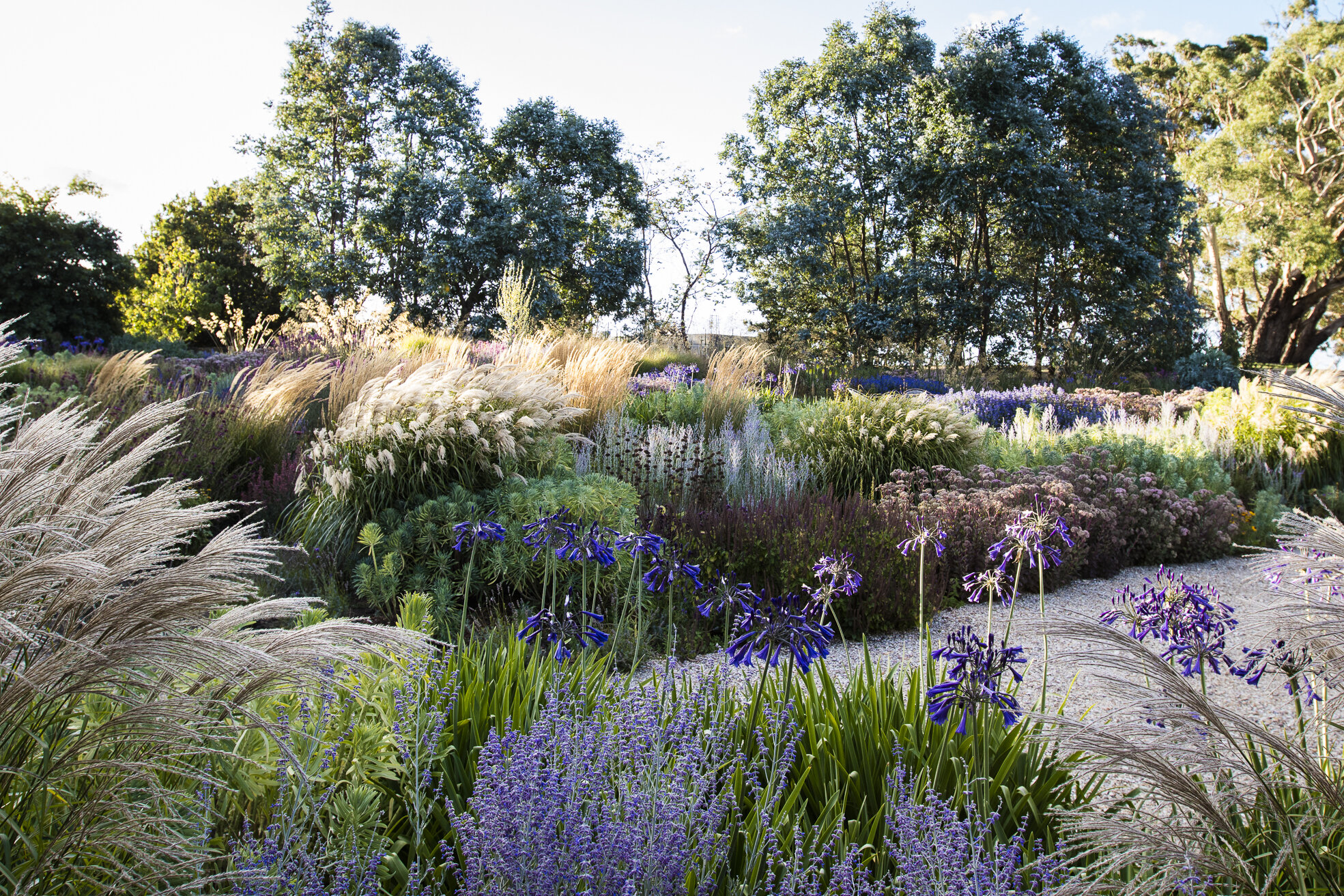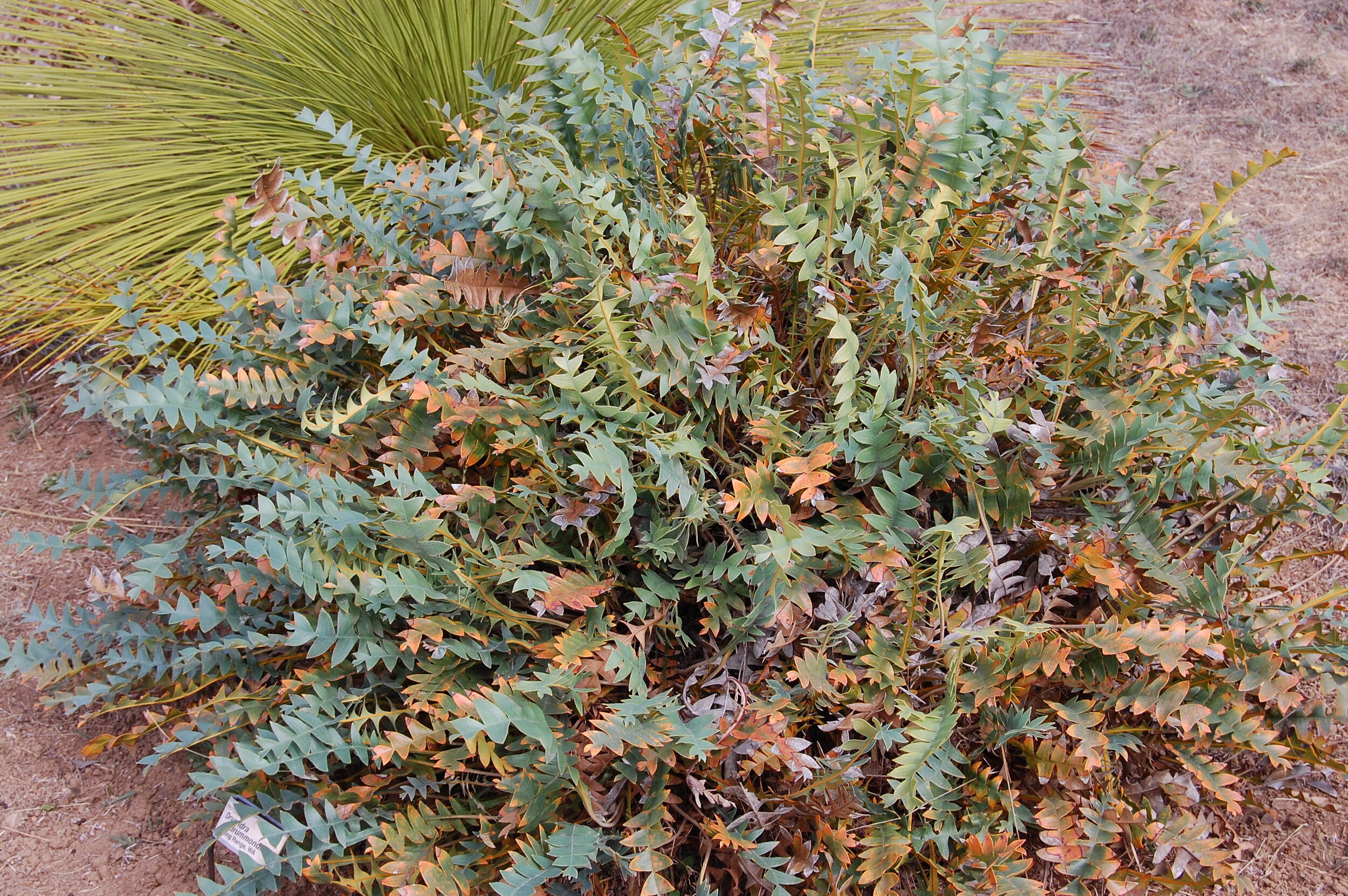“Wot, no natives?”
A wonderful ‘New Perennial’ garden, designed by Michael McCoy, near Melbourne. Yes, that Melbourne, Australia. Am I asking a naive question?
Pic. credit: Claire Takacs.
First, I had better explain what a 'whingeing pom' is to non-Brits or Australians. A 'pom' is short for 'pommie', a not always politely delivered Australian slang word for someone from Britain; the 'whingeing' refers to the fact that (traditionally) Australians have always been convinced their country is the best place in the world to live (Godzone country) and that anyone from the old 'mother country' who dared to think otherwise was slapped down as a 'whingeing pom'.
Well at the risk of being labelled one, I'd like to discuss Australian gardens and landscape design and plants in the context of developing naturalistic planting in dry climate zones more generally. The reason being that I'm working with the Australian photographer Claire Takacs on a book documenting naturalistic planting design (for Phaidon – goody!! nice big well-produced books and selling places that don’t normally do garden books, like galleries and museums) and we have found it really difficult finding examples to include. Which I find a puzzle because I have always been aware of there being a strong lobby for growing natives. But why has Claire been so stuck in finding good examples of naturalistic planting using the continent's stunning flora?
Now, confession time, my experience of the continent-nation is pretty limited: a week in Tasmania plus a few days the Australian Landscape Conference two years ago. BUT, many years ago, late eighties to early nineties, I had a nursery business, mostly perennials but a sideline in conservatory plants. Which basically meant stuff that was almost hardy and could take a bit of heat. I latched onto a lot of Australian plant material on the grounds that many new introductions from down under did rather well in early 19th century greenhouses, before being evicted by a fashion for plants from more tropical climes. So, I grew lots of Banksia, Dryandra, Anigozanthus, Melaleuca, Regelia, Prostanthera, Correa etc. To cut a long story short many of my customers tried them out in Cornwall and Devon and did rather well with them outside. When I closed the nursery, my collection became the first accessions to the National Botanic Garden of Wales where they may still be admired in the wonderful Kathryn Gustafson landscaped glasshouse. I like to go and visit them now and again.
So, I feel I know my Australian plants. One thing about them puzzled me though. Many would not take hard pruning. They just wanted to grow and grow and grow, with all their new growth at the top and many centimetres of rather unattractive dead-looking stem below. Prune them to the base and that was it.... curtains! I soon realised that this was similar to the problem with lavender and many Mediterranean sub-shrubs: they do not regenerate from the base, can't be pruned and therefore have limited lifespans as garden or landscape plants. The same is true of most species of Hebe, from rather different New Zealand climates. In the wild, they regenerate only through seed.
This was my first introduction to the distinction between re-seeders and re-sprouters, which focuses on how plants regenerate after fire (or the equivalent of hard pruning).
Now, that I am making a garden in Portugal this distinction is one that increasingly occupies me. The fact that so many good, attractive drought-tolerant plants of the Mediterranean region cannot be hard pruned and are short-lived is a huge negative factor in their use. The minority of species that can be, are of course invaluable. These are the re-sprouters. A lot of Phlomis seem to fall into this category, as do some of the most useful of foliage plants for the region: Arbutus unedo, Viburnum tinus and Pistacia lentiscus. After a fire, these re-sprout, usually vigorously (the burnt-out region of central Portugal where I am now is full of regenerating arbutus amongst seedling cistus, lavender, and brooms).
Banksia blechnifolia -was almost my favourite at the nursery, makes a great heat-proof conservatory plant. And since you ask, apparently a re-seeder although as it has minimal stem growth (it’s actually a shrub) this is not a big problem.
So, now I've gotten so aware of the re-seeder, re-sprouter distinction, I look for it everywhere. Many of the Australian species introduced to the Mediterranean are re-seeders and as they age they get bigger and bigger and eventually open out and topple over. You can see this in the otherwise rather wonderful evergreen shrub borders at Serralves in Porto, where, for example older plants of Westringia fruticosa are now showing their age.
The fact that so much of the Australian flora is made up of re-seeders rather than re-sprouters limits their use. It is all very well having really showy flowers but if they are on top of a two metre high bunch of dry twigs that's not a great reason for growing something. In addition we should add that many of the most attractive Australian species are from the South West and used to a dry summer climate and free-draining acid soils; they do not necessarily translate well to the more heavily-populated South East with different soils and climate. And, there are very few perennials. Almost none in fact. So, it is perhaps not surprising that although there has been huge interest in growing native plant species (the Society for Growing Australian Plants is one of the most impressive of any such organisation anywhere) the challenges of putting them together to make naturalistic planting combinations that work long-term is clearly a great challenge.
A Philip Johnson landscape, actually his own property driveway. All Australian! Phil is passionate about using native flora, and takes the view that many of his colleagues are still too hung up on European models of gardenmaking.
Pic. credit: Claire Takacs
On my brief trip to Australia the year before last, I discussed the re-sprouter/re-seeder distinction with quite a few people and got some rather contradictory answers. And continue to so; Carolyn Robinson whose garden in New South Wales I only know from pictures, told Claire “Ironically, the plants handling the drought least well are Aussie natives, they make up Ninety-five percent of my losses! I believe their drought strategy is not to waste energy on survival but to throw seed and die! My perennials and grasses are faring really well. Certainly here, the naturalistic style is vindicated.”
I have also begun to realise just how poorly understood or documented this absolutely key distinction is. However perhaps I should not be surprised when there is such poor documentation of plant lifespan for our own north European garden flora. for which there is a much longer history in cultivation ? In many cases fundamental research into how to propagate or grow these plants has only just cracked the basics. The nursery trade are only interested in taking on native plants if they look good in a pot – result mass exporting of ground-covering Grevillea cultivars and precious little else (Portuguese garden centres seem well stocked, and the occasional Banksia).
Banksia marginata - yes, doesn’t it look like a Christmas tree? Well since they don’t have snow at Christmas down under…. Seriously , this one is a resprouter as it has a lignotuber underground to allow for post-fire regeneration.
One who looks like he is taking on the challenge is James Hitchmough, of Sheffield University (England) whose career in this field actually started many years ago in Melbourne. He has now been invited to develop a major planting design in the city, and James being James is not holding back from being controversial in addressing Australian audiences on the topic of why they aren't engaging more with their own flora. Not so much a whingeing pom as a very provocative one who is as he put it to me recently is “ready to give the pig a poke”. Indeed he started his career in naturalistic planting here many years ago, so he clearly knows the territory and the dangers of the well-aimed beer can (sorry, can’t help some stereotyping). James has recently been posting some amazing pics on his instagram feed of Australian flora as well as sharing information on his planting plans for the city.
Meanwhile, I'd urge everyone who gardens in seasonally dry climates to try to get to grips with the resprouter-reseeder distinction. We will never progress in these places unless we understand our planting material better.
Michael McCoy website here.
Philip Johnson website here.



